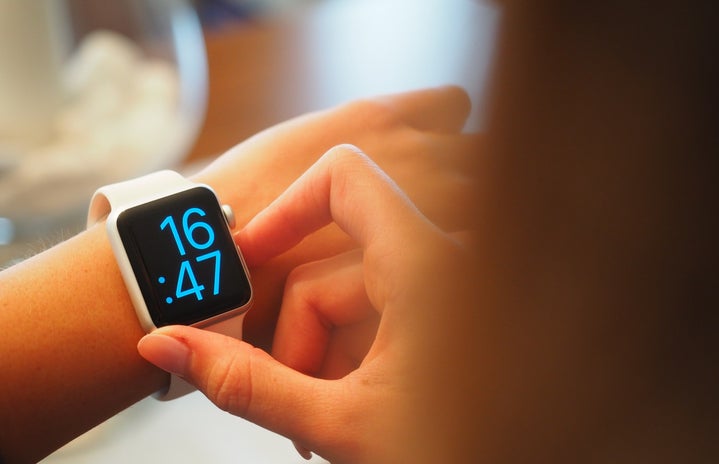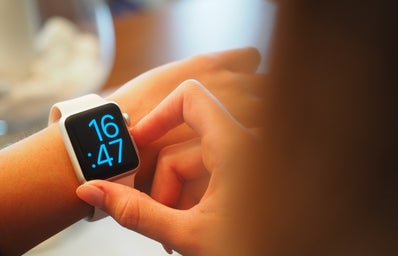In a society where health and fitness are at the forefront of every social media post and magazine cover, there is a subconscious consumption of this standardized version of health and beauty. Having a six pack or a flat stomach appears to be the only indicators of peak health in magazines, and going to the gym has become such a mainstream thing for individuals to get the body they want. Exercising for your body and wanting to change your appearance is not necessarily a bad thing if you have the right mindset and reasons for doing it. Most people are able to successfully improve their lives by eating right and having a workout routine that makes them happy and feel confident.
However, there is a side to the health and fitness industry that is not often acknowledged or discussed. Fitness culture can be extremely toxic and often becomes so when on social media. Whether individuals pose in ways that make their body appear unattainable or post rather unrealistic “what I eat in a day” montages, there is always a need to be constantly consuming what the fitness and health culture is feeding you.
As someone who has been treated for an eating disorder, I can inform you that the fitness regimes and dieting that compose the fitness hashtags on Instagram are harmful and dangerous. While individuals show their gains or losses and emphasize their ever-changing appearance, the human body is always at the forefront of “health.” This is a toxic mindset that permits itself to implant the notion that if you do not look like a GymShark model or go to the gym six times a week, you are inherently unhealthy.
Personally, I adopted this ideology after I left my eating disorder treatment center. Having been treated for anorexia and having to gain weight to put me back into a normal and healthy weight range for my height, I began to feel like I had just failed at everything society was trying to get me to do. Instead of losing weight, past the point of being underweight, I had gained it and that fact haunted me.
Recovery is not a one-day process where you wake up and magically have diminished all of your thoughts about your weight and what you eat. My eating disordered thoughts and habits stayed with me for years after I left recovery. This meant that I was still entirely vulnerable to fitness and diet culture, and I threw myself into it.
I began working out a normal amount doing exercises I wanted to do like yoga, pilates and barre. However, I was not seeing results quick enough, and I was not seeing my body shed the pounds that I had been hospitalized to gain. My body, throughout recovery, did not look like the girls on Instagram or modelling for Victoria’s Secret, and for some reason I believed that this was because I was not working out and dieting hard enough. Scrolling endlessly through Instagram and Pinterest for workout and diet information, I was convinced that if I worked out the right way, I would eventually look like them. I just wasn’t trying enough.
And so this led me down an even more intense path. I decided that if I could not lose enough weight or gain enough muscle by myself, I had to do something more vigorous. That intensity came in the form of joining cross country where we would run a minimum of 3 miles a day (up to a maximum of 6) at least 5 days a week. Since running burns off a crazy amount of calories, the weight I had been so eager to get rid of began to come off almost instantly. The main issue was, however, that I did not eat enough to replenish much of the calories I had been burning. Instead, I kept myself on a super restrictive diet in order to fit the molds of eating I had seen on Instagram and to “keep myself in check.” While this promoted my goal of losing weight, it put my body into a starvation mode where I began to have struggles functioning. This manifested in me being excessively tired, my hair falling out and even losing my period, called amenorrhea, since my body did not want to waste energy when it had to focus on ensuring that the most important parts of my body, like my heart and brain, were able to still function effectively. This just ended up with myself relapsing into my eating disorder and having to go back to treatment.
As for my diet around this time, I became a vegan for my “health” and for “the animals.” Whether I subconsciously was aware or not, my love for veganism was mostly rooted in the idea that I could restrict more food options without having to try to justify my disordered eating. How much easier would it be to turn down a piece of cake at a party because you’re a vegan, and not because you have an intense and irrational fear of calories and gaining weight?
What had been along with me for this entire ride was my Fitbit. It had been a coping mechanism for me to be able to see how many steps and calories I had taken that day and to feel satisfied at the number on the screen. After cross country practice, I would see that I walked or ran over a certain amount of steps and burnt a certain amount of calories. It was rewarding to me to see my hard work in the form of numbers, and the dopamine that I got from tracking my every move became an obsession.
Yet, as a 13 year old who just appeared really invested with fitness and eating healthy, most people did not realize how controlling I was about my health. If the numbers on my Fitbit were not where I wanted them to be, I would either restrict more of what I was eating or would exercise more often. Even on my off-days from training for cross country, I would not actually be resting, but running extra miles or doing a HIIT workout. I overworked my body by deciding that if I was not running a full seven days a week, I was not worthy of eating food that day. Even on the days I did work out, I was terrified of going out to eat or eating at a friend’s house because I was not going to know the exact calorie content in the food they were cooking for me.
Having a Fitbit only fueled my already established eating disorder under the guise that I was being healthy and body-conscious of both my movements and eating. This was, clearly, not the case, and it took a lot of researching articles and reading about people with similar experiences to mine that made me realize just how toxic my mindset was and how toxic fitness culture was. Hence why I decided to get rid of the one main contributing factor that caused me to remain in the cycle of over exercising and restricting – my Fitbit.
Now, I am not saying that Fitbits (or even Apple Watches) are inherently evil accessories. For some people, Fitbits can do wonders for their health and mental well-being. The app tracks more than just calories and steps; it can track heart rate and sleep activity and can really support a healthy lifestyle if used correctly. However, for someone like me, Fitbit only encouraged me to hit targets that were out of range and unreasonable for me to reach. I felt that my Fitbit was not supporting or encouraging me in my lifestyle, but stagnating my state of mind and the way I thought about my body and my health.
By getting rid of my Fitbit, I was no longer able to track each step I took or how many stairways I climbed. I could no longer see the calories that would cause me to feel so guilty about eating anything. Instead, I began to rely on my body to tell me what it needed instead of a piece of technology. Listening to my intuition about what feels right or like too much and not hyper fixating on my caloric intake or outtake has made such a huge difference in my life.
I feel lighter, as if most of my stress has disappeared. Instead of living through numbers, I’m living through the quality of life and my own choices. There are days where I don’t want to workout, and I don’t feel guilty about eating ice cream that night. There are other days when I decide that I want to go for a six mile hike and have a salad for lunch. Creating a balance, instead of restricting myself or thinking of health and fitness in extremes, has led to a more happier and actually healthier me.
Society and media today focus on the health of an individual – it’s in every social media post and gym selfie. But there is such a large focus on the aesthetic component of health. No one discusses their mental health or the disconnect between the mind and body that they may experience in exercise regimes. It’s so important to focus on the fact that fitness and health looks different and portrays itself in everyones’ life in different ways. Someone who is a healthy, mindful body builder is going to have a different regime and view of health than a healthy, mindful yoga instructor. Their bodies’ and their mental/physical bodies’ requirements are different, and neither is more or less healthy than the other. If we encourage exercise as something that should be enjoyed and not something that forces you to conform to the societal notion of beauty, there will be less pressure on individuals to fit to the idealized version of “health” and “fitness.” Instead, individuals can learn to listen to their specific bodies and treat their health as more than just numbers.


